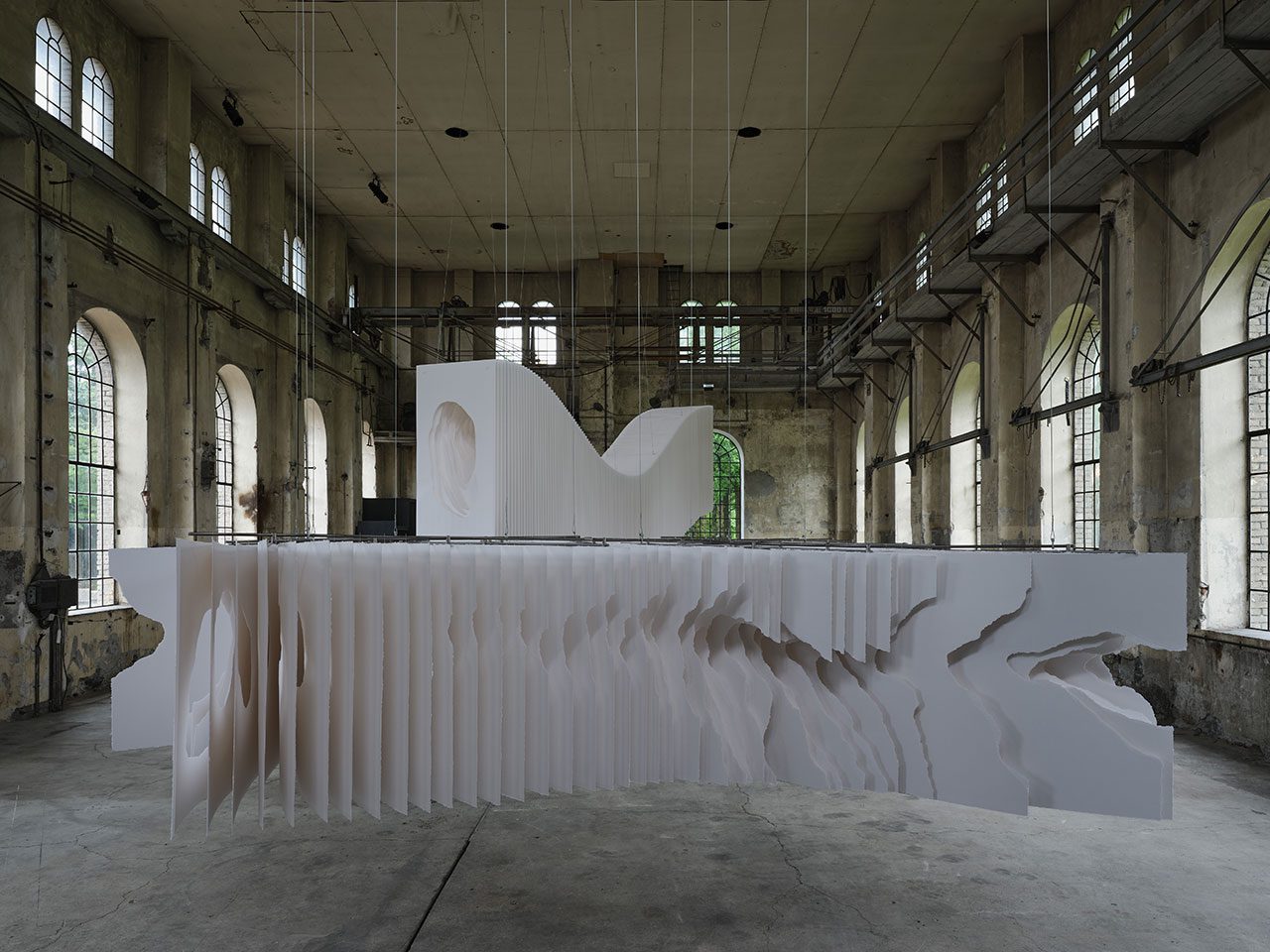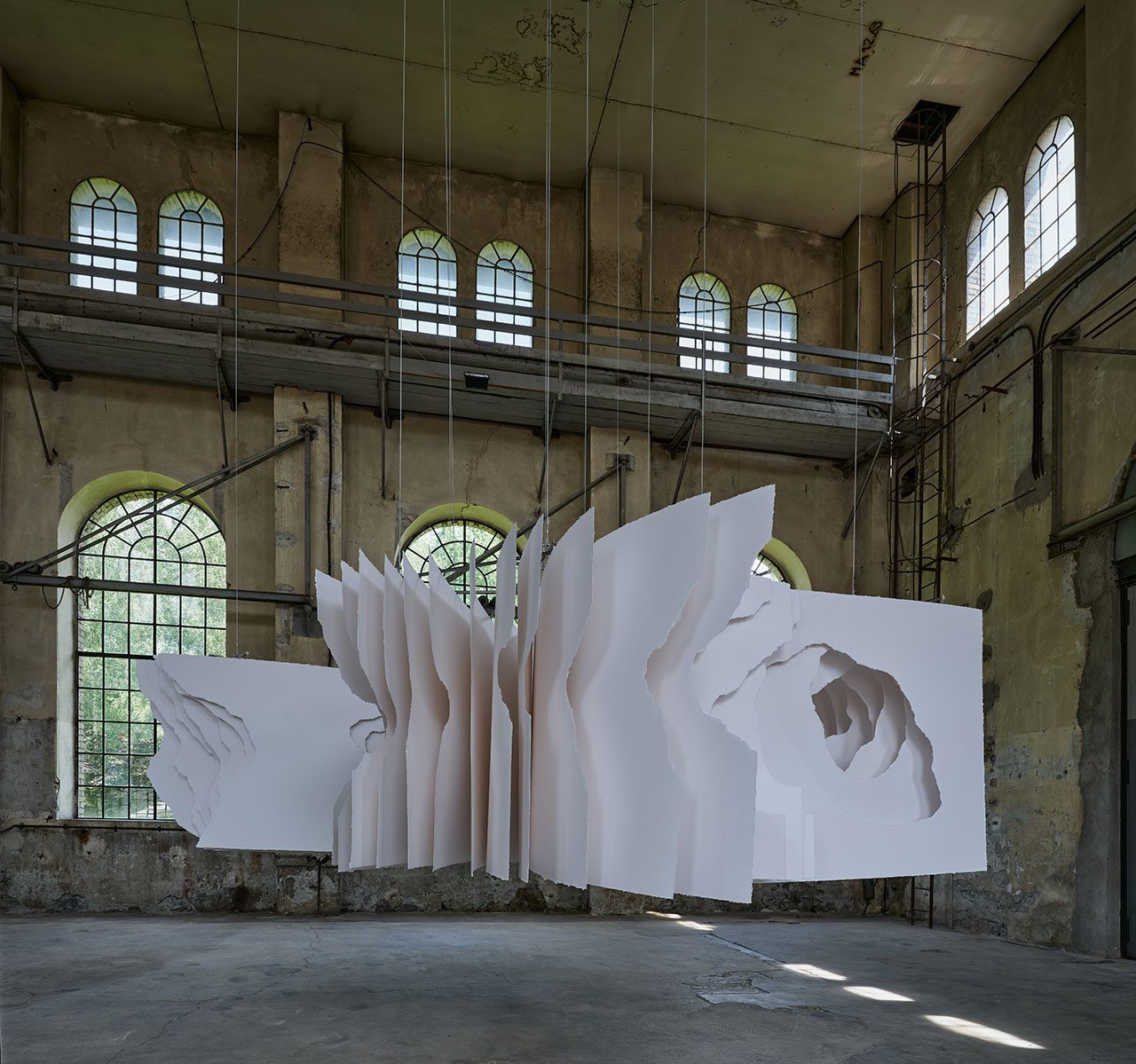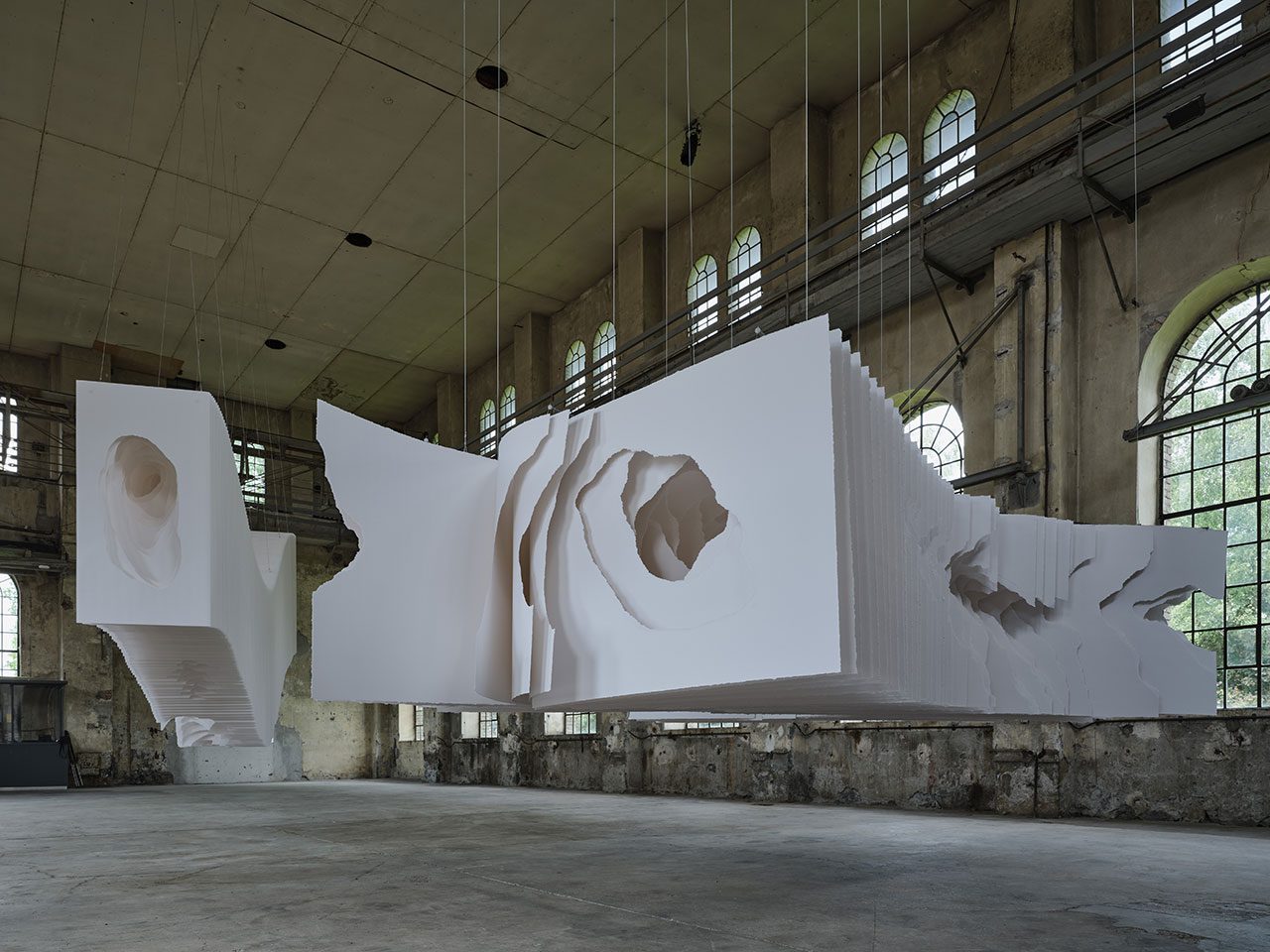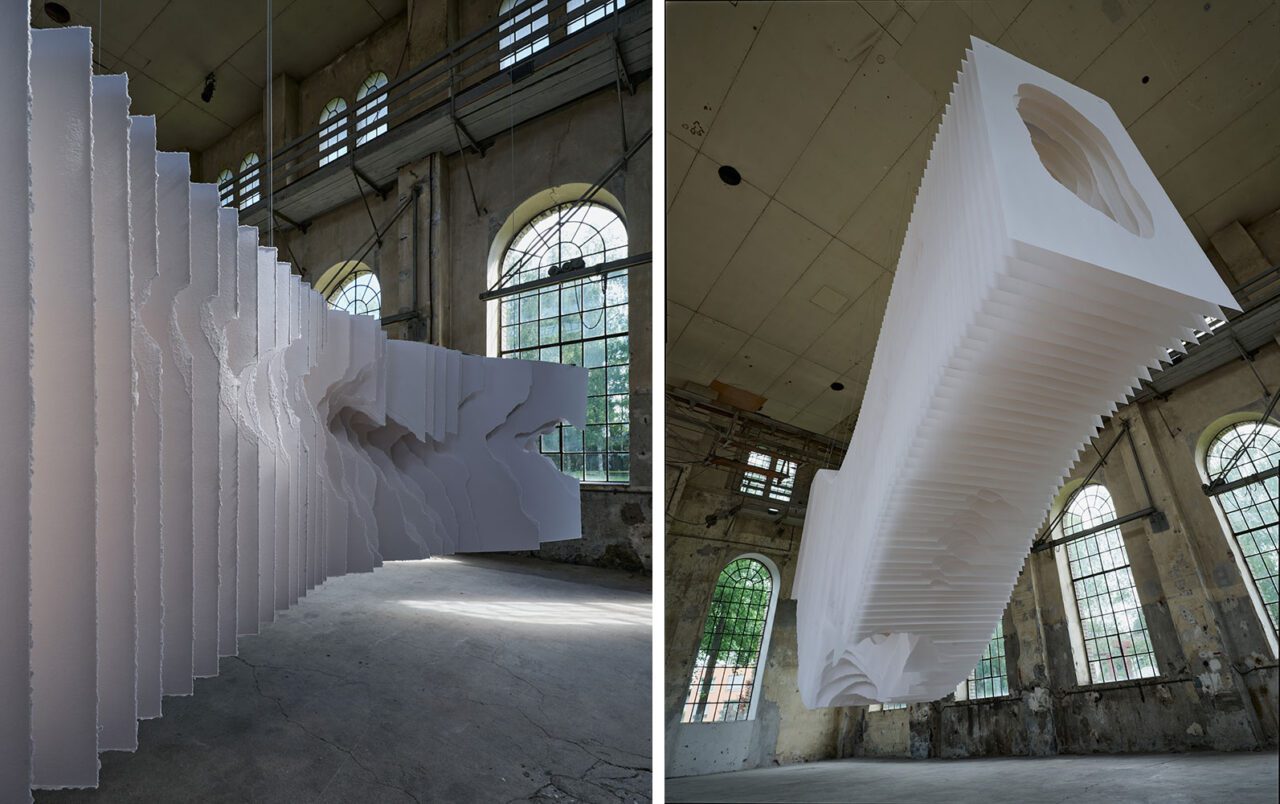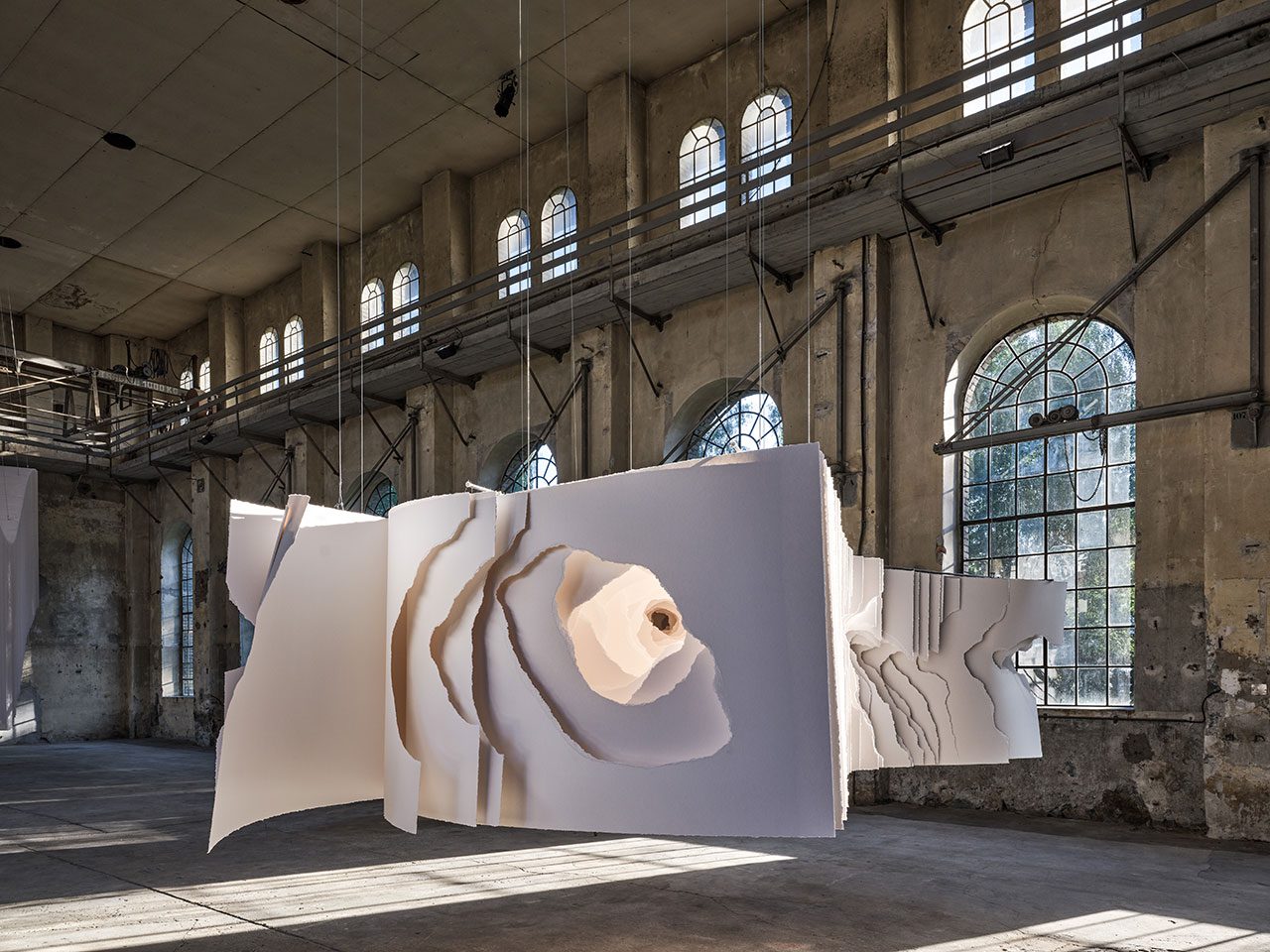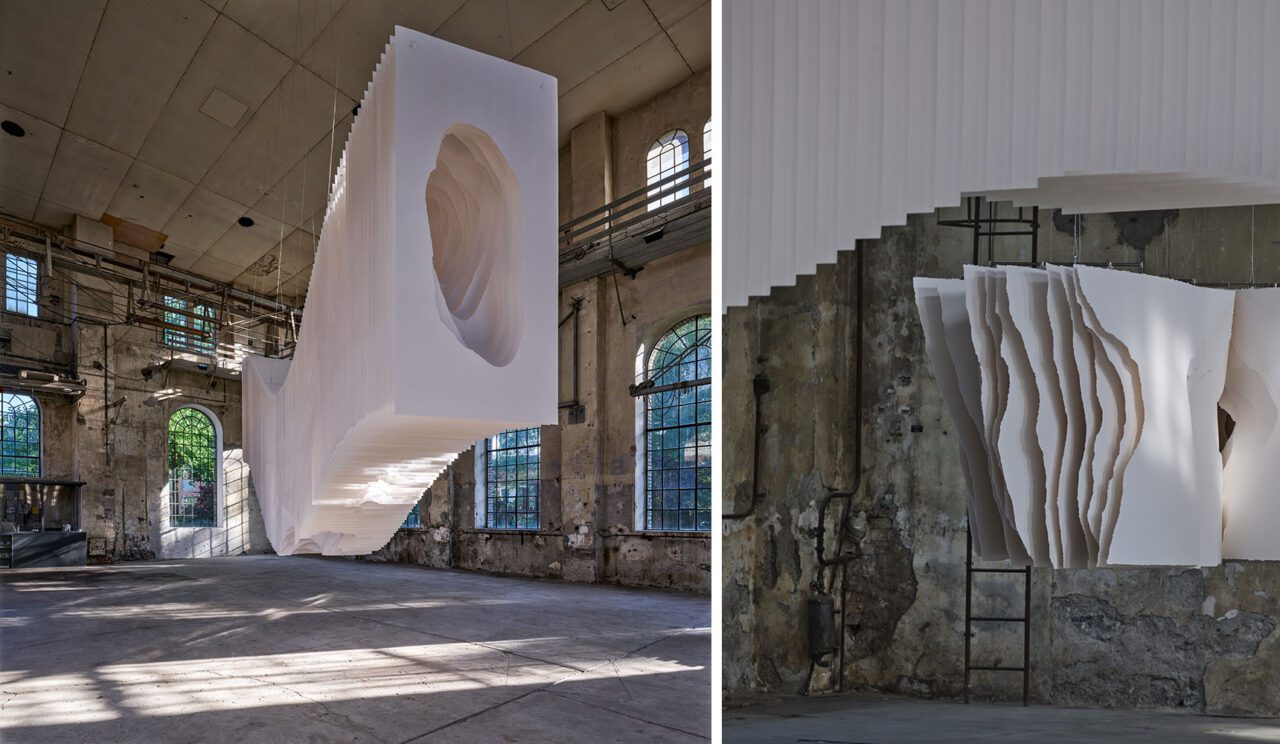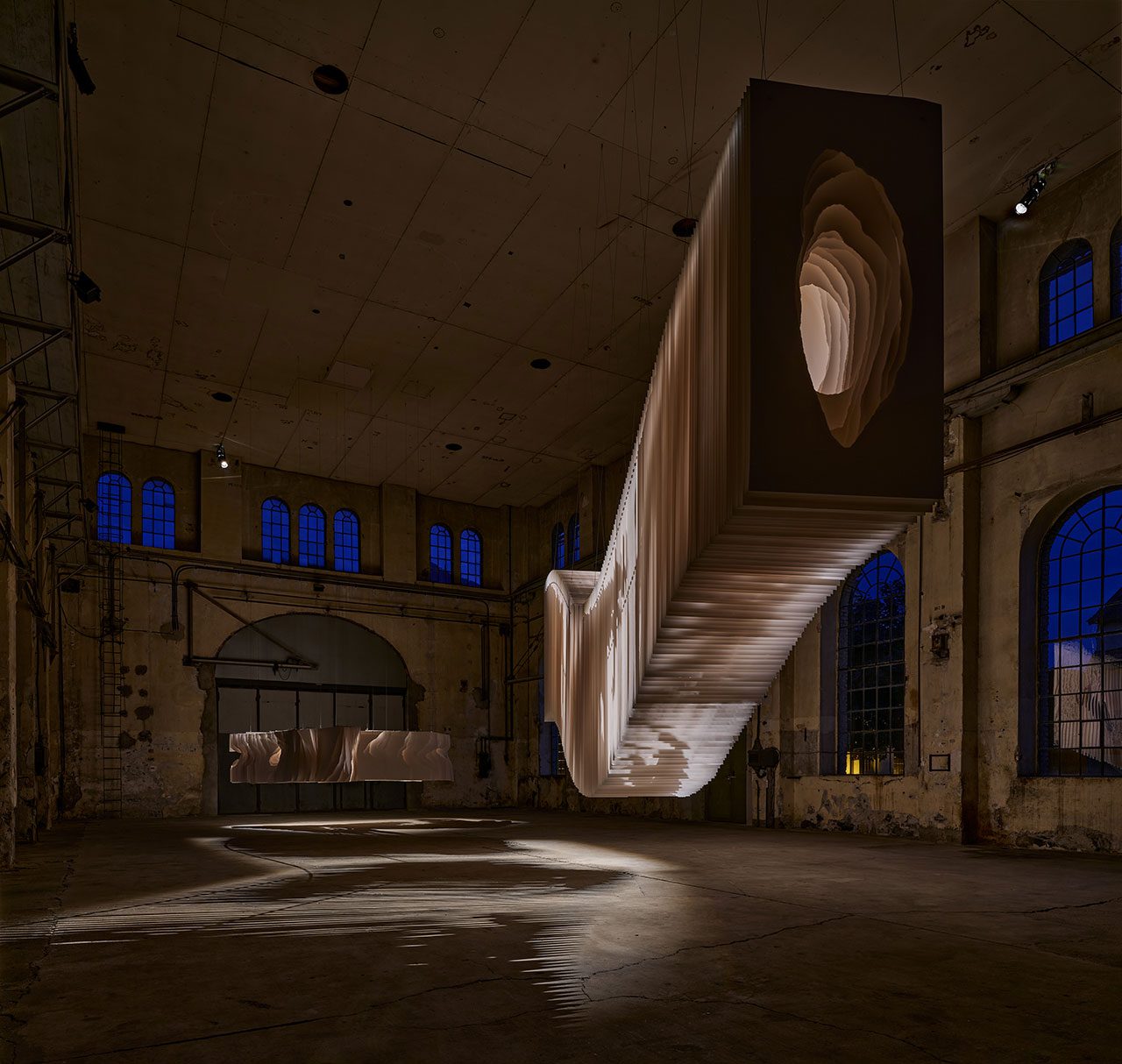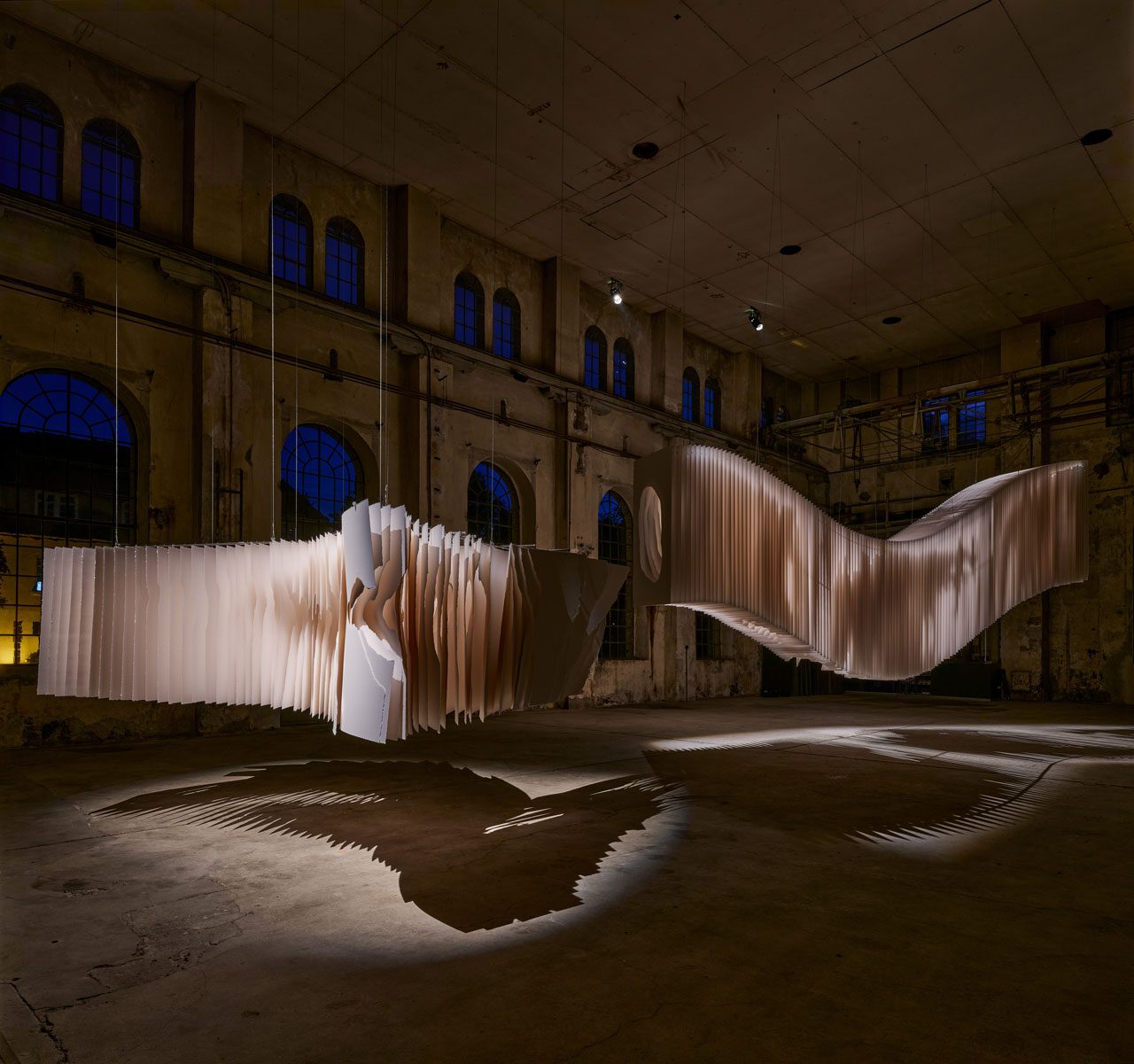PRESENTATION: Angela Glajcar-Flashback
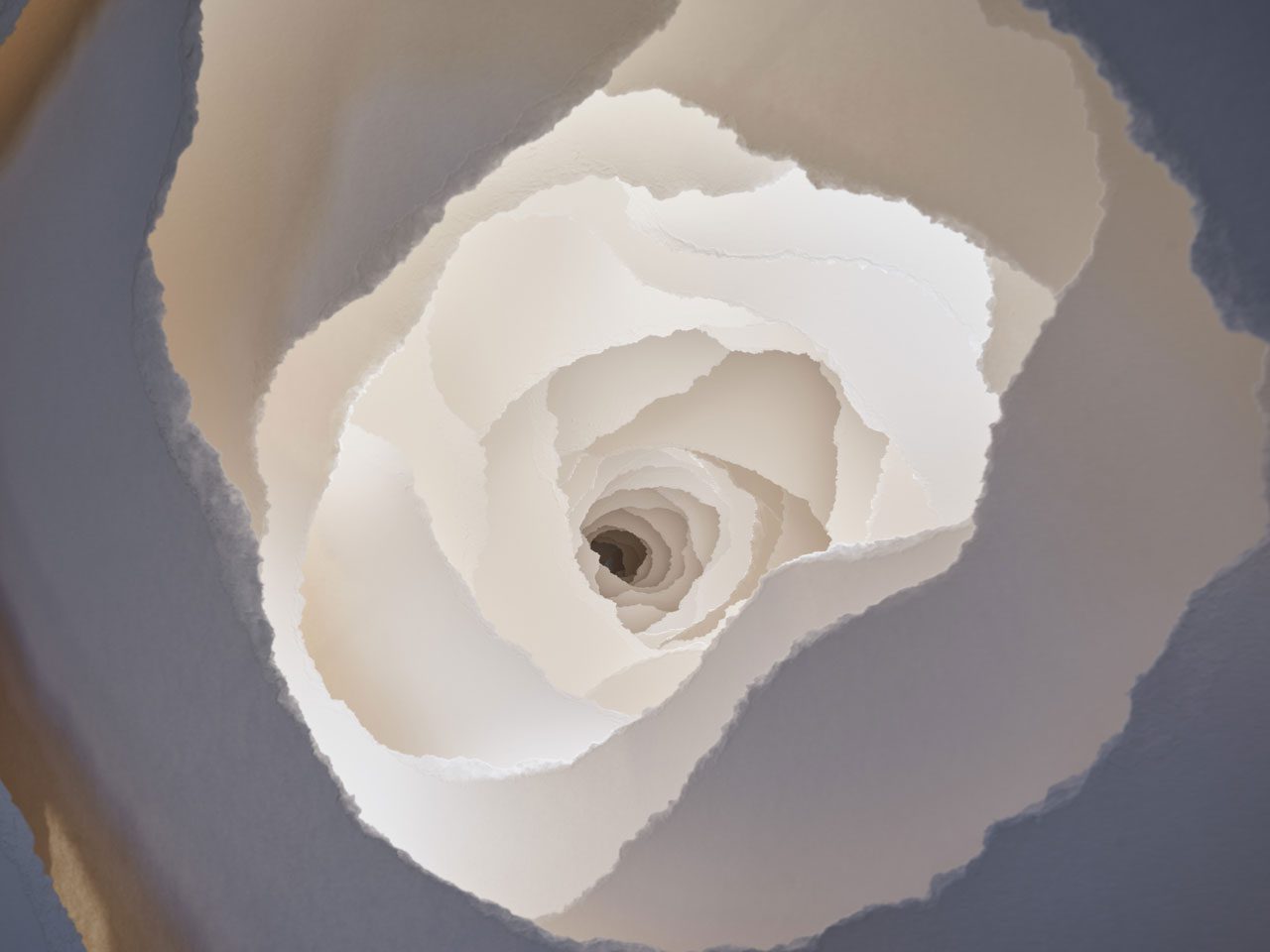 Angela Glajcar is a sculptor who primarily works with paper and glass fiber, using light and space to bring form to her structures. She studied at the Akademie der Bildenden Künste in Nuremberg from 1991 to 1998 and has received numerous awards and fellowships. She began her career working with wood and steel before moving on to paper, which she appreciates for its versatility as a medium.
Angela Glajcar is a sculptor who primarily works with paper and glass fiber, using light and space to bring form to her structures. She studied at the Akademie der Bildenden Künste in Nuremberg from 1991 to 1998 and has received numerous awards and fellowships. She began her career working with wood and steel before moving on to paper, which she appreciates for its versatility as a medium.
By Efi Michalarou
Photo: Kunstraum Dornbirn Archive
In the exhibition “FLASHBACK” Angela Glajcar’s two expansive installations “2009-072 Terforation” and “2019-043 Terforation” meet for the first time in the historic assembly hall of the Kunstraum Dornbirn, spanning a decade of artistic creation. The titles lead directly to placing the works in Glajcar’s œuvre: they were created in 2009 and 2019, bear in the catalogue raisonné the numbers 072 and 043 respectively, and are part of the series “Terforation”. Glajcar has been developing this series, very diverse and variable in form and dimensions, since 2006. In her text for the Dornbirn exhibition catalogue, Elisabeth von Samsonow says of the series title: “’Terforation’ is an artificial term coined by the artist to denote a specific element of her installation works.”1 In the catalogue raisonné of 2013, Sasa Hanten explains that the term “is derived from “perforation” (Lat. foramen = “hole) on the one hand, i.e. the perforation of hollow or flat objects. On the other hand, the term established by Glajcar alludes to the Latin word for earth, “terra”, with which the artist refers to “terra incognita”, unknown land, vigin soil. The construction of the term is linked to the use of materials: Glajcar’s preferred material is paper, which is torn into shape in large sheets and added together in a staggered arrangement to form spatial structures. The work process is direct, physically demanding and time-consuming. Accumulated with the help of mechanical devices, the paper hangs in the room and the high grammages of up to 450 g/m2 give it a spatial-plastic presence and physicality. Glajcar opens the material through the torn edges. The fibre layering and interior direction becomes visible and the composition comprehensible. The addition of binders or fillers in the industrial manufacturing process does not occlude the plant-based fibres, which create the organic appearance of the paper and give the works a natural form that the series title underlines. Entering the big industrial hall at Dornbirn, we stand directly in front of the monumental work “2009-072 Terforation”, which was presented for the first time in 2009 at the Kunst Station St. Peter in Cologne. A large number of threaded sheets of paper hang ten metres long on a holder made of metal and plastic. They form a kind of wave that reaches four metres at its crest. Each sheet was processed by hand and punctured with a hole of different dimensions, which then runs like a tunnel-cavity through the body of paper. At the lowest hanging point of the installation, we are invited to enter through an opening and look inside. The outer edges of some sheets were torn and their rectilinear integrity was thus interrupted, giving the entire structure an additional ambivalent character hovering between contour and its dissolution. A determining factor in this immanent, highly aesthetic ambivalence is the light that shines on the reflective paper, the torn edges and into the interstices. Here the former industrial hall of Kunstraum Dornbirn offers a particularly attractive environment: the natural light, beaming through the large, all-round lattice windows and shaping the mood inside the building over the course of the day, allows the paper surfaces and sculptural bodies to enter into an exciting, constantly changing relationship with the space. The second work in the exhibition, “2019-043 Terforation”, was on display at the Sharjah Art Museum in 2019. With a length of 4.8 metres and a width of 4.6 metres, this installation offers a fundamentally different experience of form. Floating above the ground, it cannot be fully grasped in a single glance. The paper strips are lined up in several strands, forming curves or fans. Everything seems to spring from a single point and close in on itself; but this impression is repeatedly reduced to absurdity when we walk around the work and the form that just seemed closed now opens up and dissolves. Through the flowing forms, the torn edges and holes form a highly attractive contrast to the materiality. Glajcar’s works experiment with the relation to the space in which they are presented in an interplay of the construction and deconstruction of expansive forms. Her structures move, always determined by the point of view, between the spheres of the abstract and the representational, without ultimately committing themselves. They are characterised by the apparent lightness and poetic plasticity of paper and architecturally structured conception. Owing to the changing daylight, the viewer’s experience is always situational and unique: it is worth coming back.
Photo: Angela Glajcar, FLASHBACK, Kunstraum Dornbirn 2024, Photo Günter Richard Wett, © the artist, courtesy of the artist and bechter kastowsky galerie
Info: Curator Thomas Häusle, Kunstraum Dornbirn, Jahngasse 9, Dornbirn, Austria, Duration: 2/6-1/12/2024, Days & Hours: Daily 10:00-18:00, www.kunstraumdornbirn.at/

